Nearly 20 years after East Providence started to reclaim 300 acres of its defunct industrial waterfront, new construction is changing the city’s landscape.
Although the progress has come in fits and starts, the momentum has been enough to help push the city’s financial picture into positive territory and bring forward a new vision about what its waterfront could become.
On the southern end of what was a heavily industrialized stretch of coastline, newly built condominiums and apartment homes have attracted several hundred residents to Kettle Point, an area that was dotted with 25 rusting, empty petroleum tanks for decades.
Also at the site, the four-story, $50 million University Orthopedics Inc. medical center rises prominently above the Providence River.
The $53 million Tockwotton on the Waterfront, a 148-bed, assisted-living and skilled nursing center, opened in 2013 at Bold Point, nestled at the foot of Fort Hill overlooking Providence.
At Bold Point Park just across the river from India Point Park, California-based Live Nation Marketing Inc. started a concert series three years ago that has brought thousands of people to the waterfront on late spring and summer evenings. A developer plans to make that entertainment venue a permanent feature on an adjoining site.
Now under construction nearby, the 22-unit Residences at Bold Point. The apartment building, at 30 Veterans Memorial Parkway, takes the place of a former auto repair shop.
The rehabilitation of old factory buildings and new construction along the waterfront have created more than 700 permanent jobs and have seen more than $300 million in private investment in recent years. The COVID-19 pandemic has not slowed interest, according to city officials.
[caption id="attachment_343712" align="alignleft" width="160"]
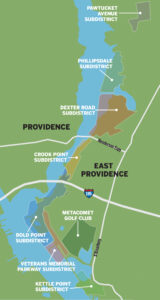
The East Providence Waterfront Commission, established by the General Assembly in 2003, oversees eight subdistricts, totaling about 300 acres. If the City Council agrees, the Metacomet Golf Club will become a ninth subdistrict. Shown here are seven of the subdistricts. Not shown is the Taunton Avenue subdistrict. / PBN GRAPHIC/
ANNE EWING
. SOURCE: EAST
PROVIDENCE
WATERFRONT
COMMISSION[/caption]
But the buildout hasn’t been without its snags.
Village on the Waterfront, a $167 million condo, marina and commercial development proposed in 2010 along Veterans Memorial Parkway, never materialized. Some neighbors of the housing and office complex at Kettle Point were irked by the way that project was approved. And most recently, residents who live near Metacomet Golf Club have fought against a plan to transform that open space into a commercial and residential complex.
Nevertheless, all the new activity has strengthened the city’s financial position, officials said.
In May, Moody’s Investors Service – which had defined the city’s bonds as below investment grade seven years ago – awarded East Providence an upgrade to A1, just four notches from its highest rating. The rating service cited strong cash flow, a new city management structure, and commercial and residential growth along its 7-mile waterfront.
The tax base of the city, according to Moody’s, grew from $3.5 billion in 2014 to $4 billion in fiscal 2018.
The waterfront “presents a great opportunity to really change the city’s destiny,” said William Fazioli, city planning director and the chairman of the East Providence Waterfront Commission. “The potential is pretty significant when you consider the amount of undeveloped property that could still be built on in the next five to 10 years.”
SLOW GOING
The East Providence Waterfront Commission was created by state act in 2003 as a quicker way for developers interested in the city’s unused waterfront properties along the Providence and Seekonk rivers to move through reviews and permitting of projects.
But much of the development has been anything but quick.
The financial meltdown in 2008 had a chilling effect across all sectors of the real estate market, and even after the climate improved, the industrial past of many of the waterfront parcels created obstacles to development, in part because of environmental contamination.
For example, the narrow 24-acre former tank farm referred to as the Chevron-Gulf Oil property holds lots of promise, with views of the Providence skyline to the north and Narragansett Bay to the south, a connection to the East Bay Bike Path and close proximity to downtown Providence.
After the Village on the Waterfront was proposed, the oil tanks were cleared from the site and some other environmental cleanup took place, but that is as far as it went. The site has been largely unchanged for years.
Fazioli said Chevron, which still owns the property, has had discussions with a regional developer that he would not identify. “I think they’re getting very close,” he said. “They shared their vision for the property … and it fits in nicely with what the city would like to see there.”
Despite hurdles, Fazioli insisted the waterfront commission is serving its purpose.
“The idea was to take these sites that were not very attractive for development because of environmental and remediation issues” and rezone for mixed-use development, he said. “That is the most viable way to develop these sites. We’ve seen with the Kettle Point development, including the residential and the new medical office building, that seems to work.”
Indeed, city officials point to 48-acre Kettle Point, another former tank farm less than a half mile down the river from the Chevron property, as a shining example of what is working in the districts overseen by the waterfront commission.
As originally approved in 2013, Kettle Point was to be exclusively residential. Plans were later modified to replace a 140-unit apartment building with an 82,500-square-foot medical building and a 400-space parking lot. The building opened in 2018.
Since then, the residential development has nearly been completed. Churchill & Banks Co., a Providence developer, has nearly finished a 62-unit, luxury condominium town-home project known as The Residences at Kettle Point, where homes are selling in the low $700,000 range, well above the city’s median price. And A.R. Building Co. has largely finished the 228-unit Kettle Point Apartments. A fifth building is under construction.
[caption id="attachment_343709" align="alignright" width="200"]
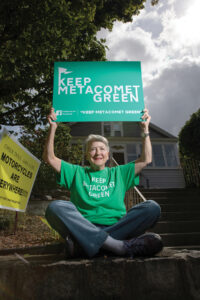
OPPOSITION CO-LEADER: East Providence resident Candace Seel has been vocal in fighting against a plan to develop part of the Metacomet Golf Club on scenic Veterans Memorial Parkway. / PBN PHOTO/RUPERT WHITELEY[/caption]
The work has paid off for the city, boosting the taxable value of the Kettle Point property from $2.2 million as a fallow brownfield to more than $60 million as a mixed-use neighborhood.
SLOW DOWN?
Not everyone is pleased.
For some, the redevelopment has become a sign the city is changing too quickly and without enough concern for neighborhoods that border the waterfront.
Nothing highlights that conflict like the changes proposed for the Metacomet Golf Club, a 138-acre course where lush fairways slope down to an inlet called Watchemoket Cove along Veterans Memorial Parkway.
If the City Council agrees, Metacomet could be rezoned from open space to a mix of commercial and residential uses, and added as a new subdistrict to the East Providence Waterfront Commission’s purview.
Keep Metacomet Green!, a group that has formed in opposition to the Metacomet plans, has galvanized hundreds of city residents. The group’s bright green lawn signs dot the neighborhoods. In public hearings, some longtime residents have said they worry what will happen given the pro-development thrust of the waterfront commission.
The golf course is under contract to a development company that as recently as August said it wanted to build homes, condominiums and commercial spaces on portions of the property.
Candace Seel, a founder of Keep Metacomet Green!, said one of the concerns is the transfer of the site to the waterfront commission’s jurisdiction.
She cited a decision of the 11-member commission several years ago that allowed the Kettle Point apartment project – despite public opposition – to avoid the district’s standard for a 10% share of affordable units. The developer agreed to contribute about $775,000 to the waterfront district’s affordable-housing fund instead, according to the commission documents.
“Before they decided that Kettle Point didn’t need to provide affordable housing, they had public hearings,” Seel recalled. “But to my way of thinking, they completely disregarded what the public wanted.”
It’s been about six months since the owners of the Metacomet Golf Club, which includes pro golfer and Rhode Island native Brad Faxon, agreed to sell the struggling country club to commercial developer Marshall Development LLC.
[caption id="attachment_343708" align="aligncenter" width="1024"]
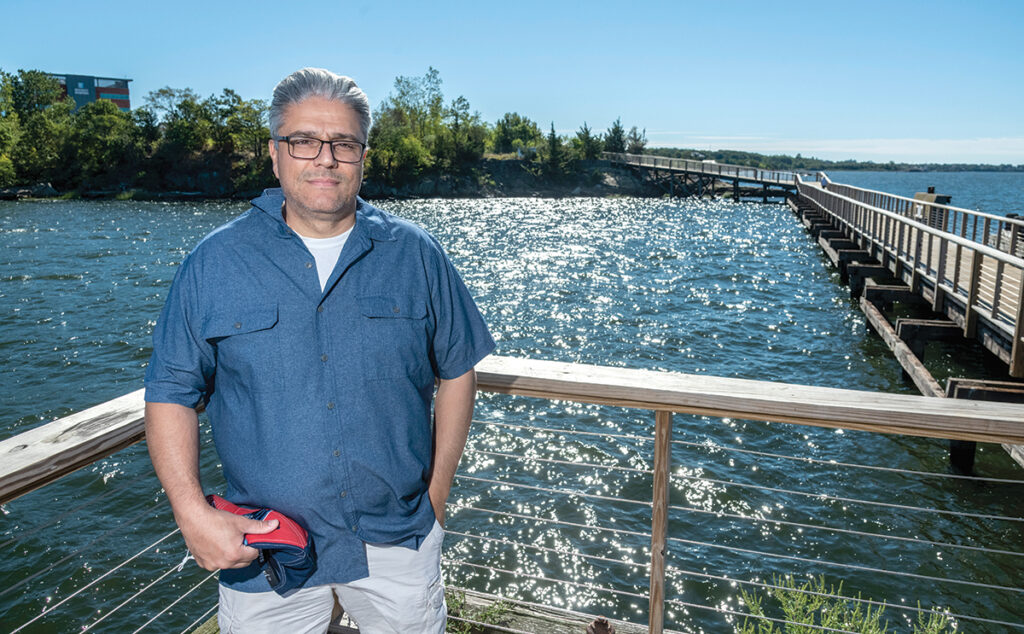
PIER REVIEW: East Providence Mayor Roberto DaSilva visits a 600-foot public pier off Kettle Point on the Providence River, part of the development that has taken place along the city’s once-industrialized waterfront. / PBN PHOTO/MICHAEL SALERNO[/caption]
State Sen. William Conley Jr., an attorney who represents Marshall, said in a recent public hearing the plan is to include dedicated open space, acreage that will ensure that the site is forever open to the public. The golf course had been operated as a private club for over a century, he noted.
“It will belong to all of us, and no longer a select few,” Conley said in August at a public meeting.
At the same hearing, opponents said they wanted to prevent overdevelopment.
Some cited increased traffic on Veterans Memorial Parkway and the loss of green space. The city’s Conservation Commission in August also recommended the council leave the course as permanent open space.
Seel said the scale of the University Orthopedics building at Kettle Point ran counter to the kind of scaled-back development that the city’s master plan promised would happen. That type of change has concerned neighbors about what will happen at Metacomet, she said.
“The waterfront commission plunked that monstrous University Orthopedics building right at the edge of the water,” she said. “That’s one reason why we’re so opposed to them having any authority over this property.”
The City Council is expected to continue its hearing on the Metacomet plan on Sept. 25. If the council agrees to add the site to the waterfront commission’s oversight, it will add at least 60 more acres of developable land to the district.
Chris Martin, the commission’s new executive director, said the move is intended to help facilitate development. If an application is complete, a decision is promised within 45 days.
But the commission works in tandem with state and local agencies, he said.
“When you come to the waterfront district to apply for permits for a development, we’re able to work through the approval of the permits and the zoning all in one area,” Martin said. “That said, we work very closely with the planning department and the zoning department and all the departments in the city. We don’t do this in a silo.”
[caption id="attachment_343710" align="aligncenter" width="1024"]
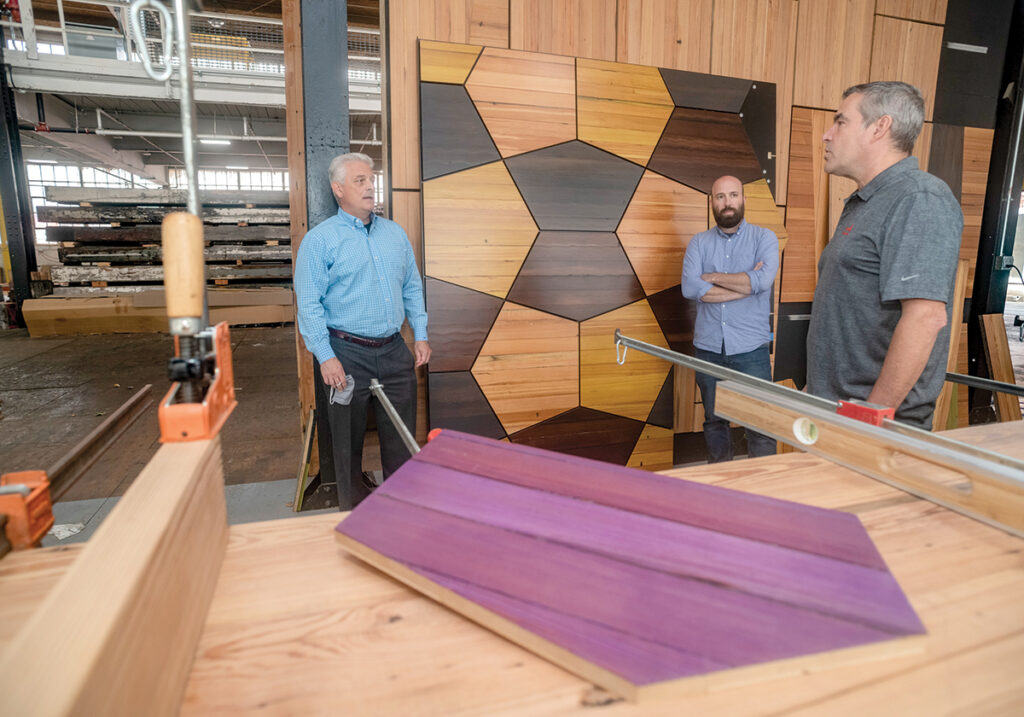
SMOOTH LANDING: Stephen E. Lane, right, owner of Ark Woods & Services LLC, has set up his business in Phillipsdale Landing, a former industrial site along the Seekonk River in East Providence. Lane speaks with Chris Martin, center, East Providence Waterfront Commission executive director, and William Fazioli, East Providence planning director and commission chairman. / PBN PHOTO/MICHAEL SALERNO[/caption]
MORE TO DO
There are plans for other parts of the East Providence waterfront on the horizon.
A 36-acre parcel of the Chevron-owned riverfront site created when a tidal area was infilled with stone and gravel in the 1970s is slated to be used as a $103 million staging site for offshore wind projects. The project, which includes the construction of a 1,020-foot linear bulkhead and two deep-water berths, is expected to be completed within two years and will involve 650 jobs, according to the waterfront commission.
To the north of Interstate 195, the coastline seems to have had less active development in recent years, but new infrastructure is going to lay the groundwork for significant change.
The R.I. Department of Transportation is building an off-ramp from I-195 that will provide critical direct access to Waterfront Drive. Once that connection is made, the northern section of the waterfront, along the Seekonk River, will become much more attractive to development.
Another state project, construction of a new bridge to replace the Henderson Bridge, will also establish direct access to Waterfront Drive.
Farther north, in the Rumford section of the city, Phillipsdale Landing LLC is a commercial redevelopment of the 27-acre former Washburn Wire/Ocean State Steel site. Acquired by new owners five years ago, the once-vacant property is now about 75% leased, according to a waterfront commission report.
Businesses attracted to the site include Ark Woods & Services LLC, a new company that creates building materials from reclaimed wood.
Stephen E. Lane, the owner of Ark Woods, which leases about 35,000 square feet, said he chose East Providence because there’s enough space to store 1 million board feet of reclaimed wood, including yellow pine.
He said he also likes the affordability, the ease of access and the proximity to Providence and Rhode Island School of Design, where his four employees are based.
“Affordable. The places were big, industrial, flexible,” he said. “In East Providence, the diversity of the industrial buildings [is] quite interesting. For companies that have more of an industrial requirement, I think it’s a great spot.”
Looking to the future, East Providence Mayor Roberto DaSilva said his hope is for the waterfront district to incorporate more public access to the waterfront, such as the new $600,000 public fishing pier at Kettle Point funded by developer Churchill & Banks, and for future housing developments to have a wide mix of price ranges.
He understands some in East Providence would like to see less development. But, he added, it’s important for the community to attract more residents and visitors.
“There are some people out there in the world that are happy to leave things the way things were in the 1950s and 1960s,” he said. “But I am interested in bringing people into our community to enjoy the great beauty and the natural resources that we have available.”
Mary MacDonald is a PBN staff writer. Contact her at Macdonald@PBN.com.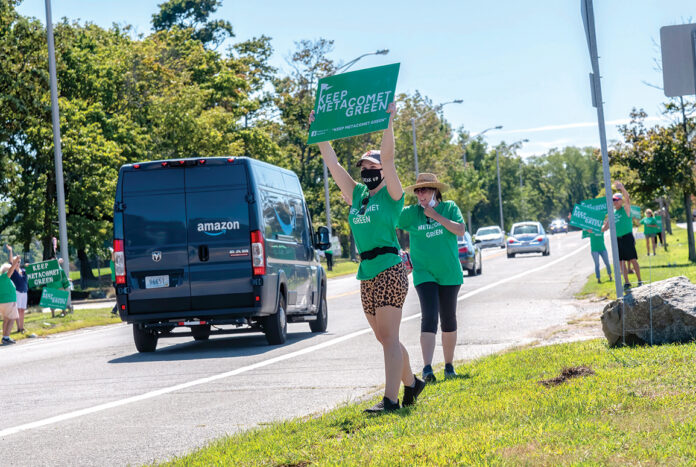


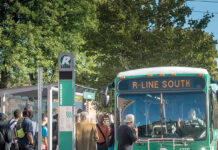












While I might sympathize overall with Candace Seel’s views on affordable housing, I must criticize her lack of “street smarts” on the intricacies of construction costs and profit.
Let me use an example the experiences of a friend in his search for a new condo. He told me he avoided any development having affordable housing in it because there was no way a developer to reduce construction costs in one unit versus another. Sure they can use lower cost materials in the kitchen and bathrooms, but that’s the extent of it. After factoring in total construction cost and profit, the reward from risking your capital, in pricing of the condos, you can only get to the correct return by increasing the price of the condos to offset the “affordable” units. In other words all purchasers of the other units subsidize the affordable units. The more luxurious the project, the greater the disconnect and the greater the subsidy.
It’s unrealistic to assume you would ever get a affordable $200,000 condo amidst $700,000 units on any waterfront anywhere. You can’t find cheap low cost houses at Malibu Beach why would you think that is possible at Kettle Point. No, the route to affordable housing is to erect buildings totally devoted to that kind of housing (maybe with government subsidies) and/or push initiatives to significantly increase the overall housing stock of the community and let the natural domino effect of that improve the availability of affordable units.